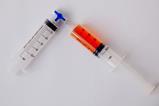How do you get students to reflect meaningfully on their completed mock exams if you’ve already done the thinking for them by marking it? Declan Fleming has a cunning chemical idea

We’re rightly encouraged to make students hunt for mistakes in completed tests rather than marking what’s right or wrong (eg, ‘There are two mistakes on this page – find them and explain the problem’). In What does this look like in the classroom, Dylan Wiliam recommends that after a mock exam students discuss the questions to agree a best answer before self-assessing against the mark scheme.
The issue with this is teachers need to mark mock exams carefully and securely for grade predictions and university applications. It’s really helpful to be able to tick, circle and highlight your way through a script, if for nothing else to help you keep count. However, trying to get the most out of these marked scripts through self and peer assessment is problematic because as soon as a student sees a tick, you’ve done the thinking for them.
This is where thermochromic pens (eg Pilot FriXion) come to the rescue. I mark exam scripts in thermochromic ink. I provide any detail or comments I want to add, and then put them all in an oven set to 80°C. Students then reflect on their exam answers, unable to see my scribblings. Only once they’ve earned my comments and marking decisions do I place the scripts into the freezer to restore all my work. Of course, for this to work, students need to be warned not to use thermochromic pens on their answers!
The chemistry behind the pedagogy
The ink in thermochromic pens is a pH-sensitive diaryl or triaryl phthalide, similar to phenolphthalein or crystal violet, or other leuco dyes (dyes that can switch between colourless and coloured chemical forms). The ink can interact with a weak acid (a ‘developer’) such as a phenol – we can demonstrate this interaction by showing that 1 M HCl decolourises the ink but 1 M NaOH has no effect.
To stabilise the coloured and colourless forms, the pen manufacturers, Pilot, dissolve the dye in a mixture of long-chain aliphatic alcohols (polar–protic) and esters (polar–aprotic). Different solvent effects come into play at different temperatures, which favour different levels of charge on the dye and consequentially different sizes of conjugated pi-system responsible for the dye’s colour. Pilot can partially tune the temperature the ink disappears by ensuring the melting point of at least one solvent component is 50–80°C. Upon melting, the component comes into play within the mixture.
Pilot also encapsulate the reagents in 2–3 micron capsules, small enough for smooth-flowing ink. Their integrated rubber that comes with Pilot FriXion pens has just the right friction coefficient to cause enough heating upon rubbing to get the ink to change without damaging the paper.














3 readers' comments